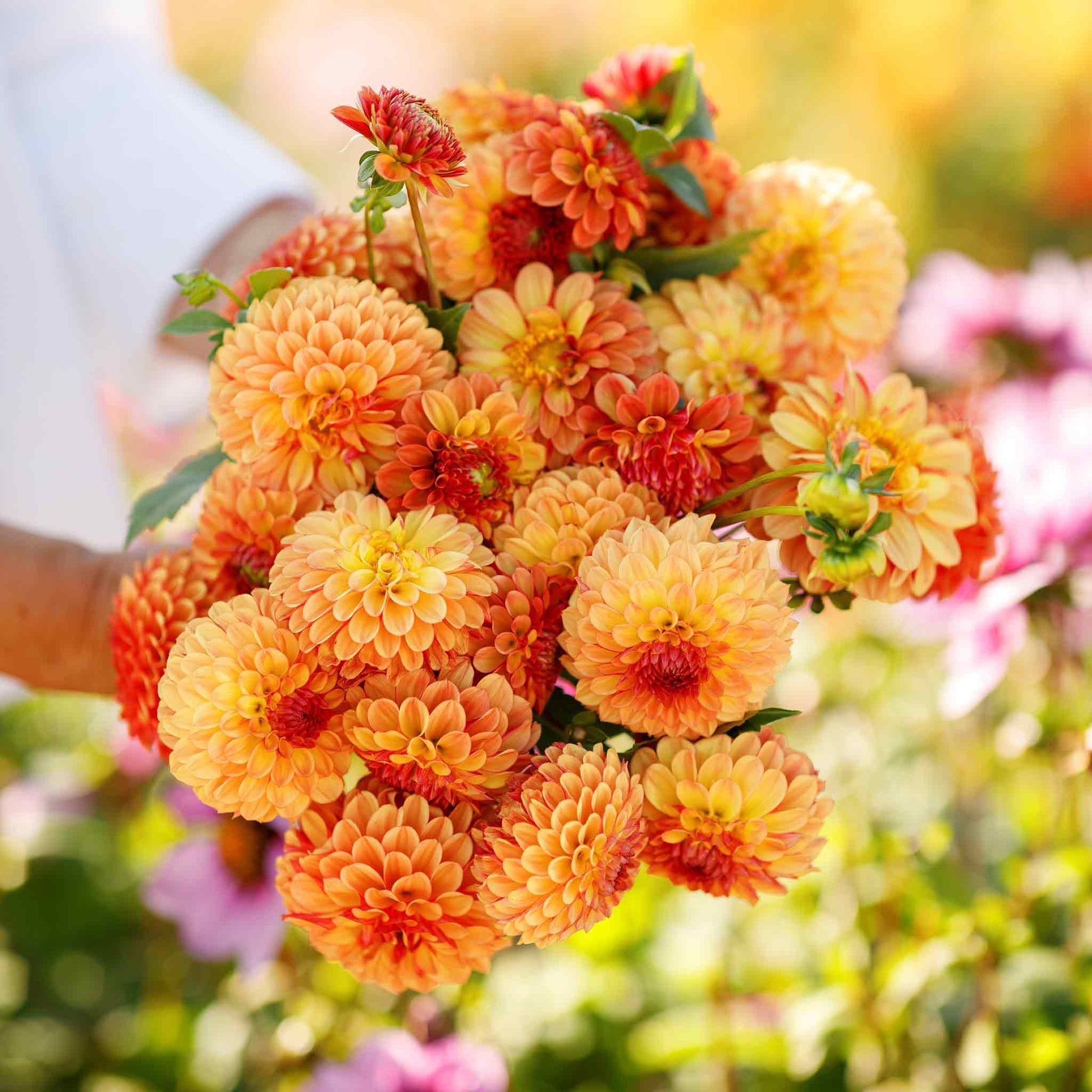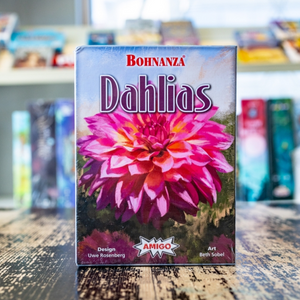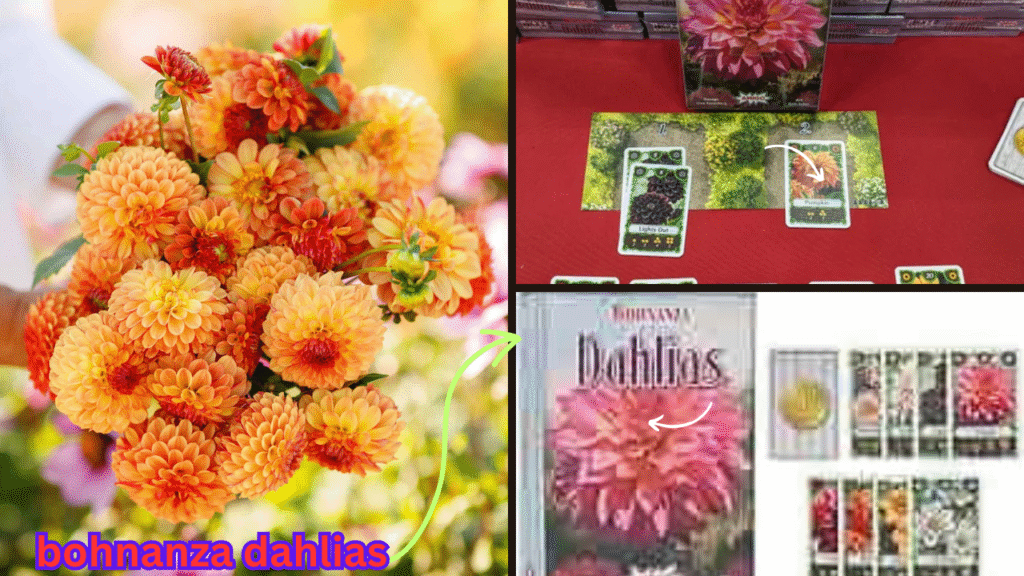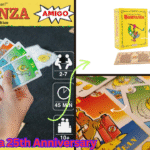Introduction

Flowers have always been a symbol of beauty, elegance, and joy. Among the most eye-catching flowers in gardens around the world are dahlias. Known for their bright colors, unique shapes, and long blooming seasons, dahlias are a favorite among gardeners. Within the wide variety of dahlias, Bohnanza Dahlias stand out as a special type that combines vibrant appearance with relatively easy care.
If you are a garden lover or someone who simply enjoys colorful flowers, learning about Bohnanza Dahlias will give you all the information you need—from planting and care to enjoying their long-lasting blooms.
What Are Bohnanza Dahlias?
Bohnanza Dahlias are a variety of dahlias known for their cheerful colors, medium-sized blooms, and sturdy growth. They often produce flowers in shades of yellow, orange, red, and pink, creating a striking display in any garden.
Unlike some dahlia types that need expert-level care, Bohnanza Dahlias are considered beginner-friendly. Their robust stems make them perfect for both garden beds and cut flowers, meaning you can enjoy them outdoors and in your home as fresh floral arrangements.
History and Origin
Dahlias were originally discovered in Mexico and have been grown in Europe and other parts of the world since the 18th century. Over time, different dahlia varieties were bred for their unique shapes, colors, and sizes.
Bohnanza Dahlias belong to the modern cultivated varieties that combine hardiness, consistent blooming, and vibrant shades. Their name “Bohnanza” is often linked to their abundant growth, as they tend to produce many flowers throughout the season, creating a real “bonanza” of colors.

Characteristics of Bohnanza Dahlias
When identifying Bohnanza Dahlias, here are the main characteristics you will notice:
- Bloom Size: Medium (usually around 4–6 inches in diameter).
- Colors: Warm shades like yellow, gold, orange, red, and pink.
- Height: Typically 24–36 inches tall, making them ideal for garden borders.
- Blooming Season: Summer to early autumn (long-lasting flowers).
- Stem Strength: Strong stems, suitable for cutting and arranging in vases.
These features make them versatile garden plants that look stunning in both small and large spaces.
How to Plant Bohnanza Dahlias
1. Choosing the Right Spot
Bohnanza Dahlias love sunlight. Plant them in a spot where they will receive at least 6–8 hours of direct sunlight daily. The soil should be well-drained and rich in organic matter.
2. Preparing the Soil
Dahlias prefer loamy soil with a slightly acidic to neutral pH (around 6.0–7.0). Add compost or organic manure to improve soil fertility.
3. Planting Tubers

- Plant the tubers in spring after the last frost.
- Dig a hole about 6–8 inches deep.
- Place the tuber with the “eye” facing upward.
- Cover it with soil and water lightly.
4. Spacing
Keep at least 18–24 inches of space between plants to allow them to grow properly without overcrowding.
Caring for Bohnanza Dahlias
Watering
- Water regularly but avoid waterlogging.
- Aim to keep the soil moist but not soggy.
Fertilizing
- Use a balanced fertilizer (low in nitrogen) every 3–4 weeks.
- Too much nitrogen can cause leafy growth instead of flowers.
Staking
Since Bohnanza Dahlias grow up to 3 feet tall, staking helps keep the stems upright, especially in windy areas.
Deadheading
Remove faded flowers regularly. This encourages the plant to produce more blooms throughout the season.
Common Problems and Solutions
- Pests: Aphids, slugs, and snails may attack dahlias. Use organic insecticidal soap or natural remedies.
- Powdery Mildew: Prevent overcrowding and water at the base of the plant.
- Tubers Rotting: Ensure well-drained soil and avoid excessive watering.
With proper care, these issues can be minimized.
Why Gardeners Love Bohnanza Dahlias
:strip_icc()/pic7682287.jpg)
Gardeners admire Bohnanza Dahlias for many reasons:
- Abundant blooms that last from summer to fall.
- Bright, cheerful colors that light up any garden.
- Versatility—great for borders, containers, and cut flowers.
- Beginner-friendly compared to some delicate dahlia varieties.
They are often called the “happy flowers” of the dahlia family.
Using Bohnanza Dahlias in Floral Arrangements
One of the best things about Bohnanza Dahlias is how well they work as cut flowers. Their sturdy stems and long vase life make them a florist’s favorite. You can mix them with roses, lilies, or even simple greenery to create vibrant bouquets.
Pro tip: Cut dahlias in the morning or evening when the flowers are fully open for the best vase life.
Tips for Winter Care
In colder regions, dahlias do not survive harsh winters. Here’s how to protect them:
- After the first frost, cut the plant back to about 6 inches.
- Carefully dig out the tubers.
- Let them dry for a few days.
- Store them in a cool, dark, and dry place until next spring.
This ensures you can replant them the following year.
Fun Facts About Bohnanza Dahlias
- Dahlias are the national flower of Mexico.
- A single tuber can produce dozens of flowers in one season.
- In the Victorian era, dahlias symbolized commitment and elegance.
- Bohnanza Dahlias are often chosen for wedding decorations due to their cheerful colors.
Conclusion
Bohnanza Dahlias are a wonderful addition to any garden. With their bright colors, long-lasting blooms, and beginner-friendly nature, they bring joy to gardeners and admirers alike. Whether you grow them for your backyard, balcony, or as cut flowers for your home, these dahlias promise a “bonanza” of beauty all season long.
By giving them the right care—sunlight, proper watering, and seasonal protection—you can enjoy these stunning flowers year after year.


